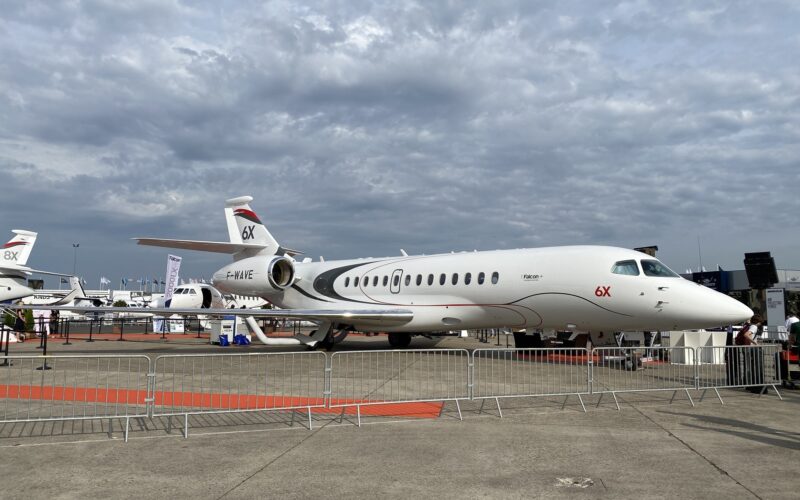Dassault Requests Deviation from EASA for Falcon 6X Certification

Dassault is in the process of certifying its latest private jet, the Falcon 6X. However, the company has encountered a hurdle as the jet’s fuel tank design fails to meet the safe operations requirements set by the European Union Aviation Safety Agency (EASA). As a result, Dassault has formally requested a deviation from EASA to address this issue.
EASA’s documentation states that all fuel tanks, except those within the torsion box of high aspect ratio wings and made of light metal alloy, must be evaluated against wheel and tyre failure threat models. Since the Falcon 6X’s fuel tanks are located near the landing gear area, they are required to withstand potential impacts from tyre and wheel fragments, small debris from engine or APU failure, and other likely debris on the runway.
During the Type Certification project for the Falcon 6X, Dassault identified two areas of the fuselage tank that were unable to withstand the impact of wheel flange debris without fuel leakage, making them non-compliant with EASA regulations. Due to project constraints and time limitations, the redesign of these areas was not possible. Therefore, Dassault has sought a deviation from EASA to proceed with certification.
Dassault has assured EASA that after the type certification is granted for the Falcon 6X, they will develop, certify, and implement the necessary design changes to ensure full compliance with safety regulations.
To address concerns about the aircraft’s safety during this interim period, Dassault has presented three mitigating factors:
- Positive experience with the current Falcon fleet, which shares a similar configuration and wheels from the same manufacturer as the Falcon 6X.
- Low probability of wheel debris impacting the fuel tanks’ areas that are not sufficiently protected.
- No direct fuel spillage on potential ignition sources.
EASA has agreed that the design change will be applied retroactively to any aircraft delivered with a design compliant with the deviation. They have requested Dassault to submit a plan outlining how they will implement the necessary changes and retrofits, with a focus on minimizing exposure to the deviation.
EASA has invited interested parties to provide feedback on the matter until July 28, 2023.
Dassault intends to have the Falcon 6X enter service in 2023. This incident is reminiscent of a similar situation in December 2022 when EASA asked Airbus to make changes to the design of the Rear Center Tank (RCT) of the A321XLR, the largest and long-range variant of the A321neo family. EASA considered the integration of the RCT, located below the cabin floor, an unusual design feature relative to standard practices.
